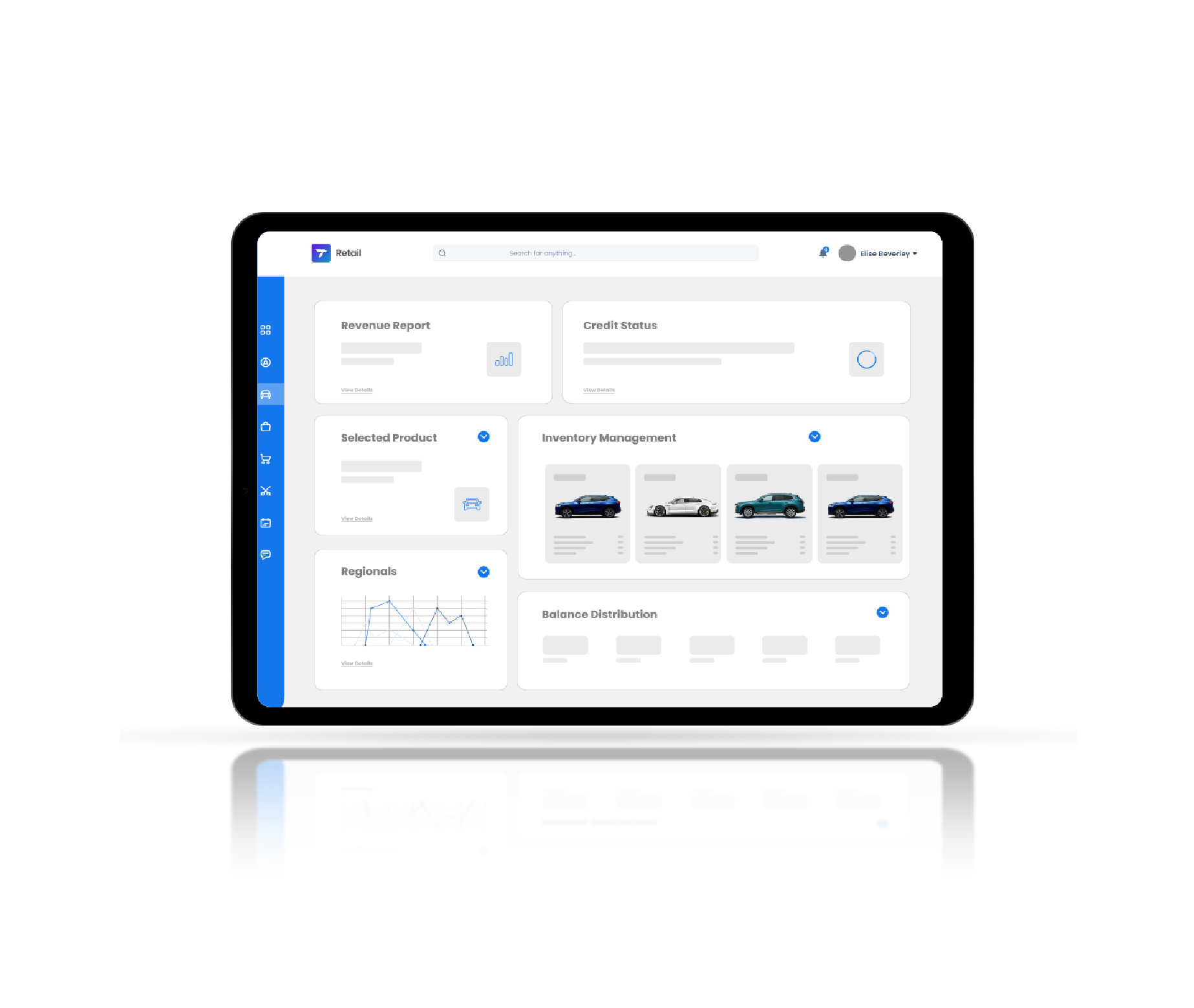Blog
Beyond profit: The rising importance of sustainable financing options in asset finance and leasing
By NETSOL Technologies, on May 28, 2024
Delve into the rising significance of sustainable asset finance and leasing. Explore how businesses are embracing sustainability in finance for long-term success.

The concept of sustainable finance is emerging as an important solution for promoting environmentally friendly investment plans. The sector can prioritize regulations and strategies by following sustainable finance practices and building an eco-conscious infrastructure. Investors and lenders are placing greater emphasis on environmental, social and governance (ESG) factors when assessing investment opportunities. According to a report by Capgemini which examined the impact that sustainability has on consumer purchasing patterns, it was found that nearly 80% of consumers have been changing their preferences while making purchasing decisions based on social responsibility and the impact on the environment.
Understanding the concept of sustainable asset finance
Sustainability in finance is investment planning that integrates ESG factors. Before this approach, businesses strategized based on profit only, focusing on shareholders. However, today, ESG factors have become critical components in capital allocation, infusing sustainable finance practices across sectors. The basic concept of sustainable asset finance and leasing revolves around promoting biodiversity and nature conservation. Elements like deforestation, climate change, waste management and air quality control fall in. These contribute to the social aspects of building a relationship with the end customer through fair trade policies, environmental concerns, human rights and customer satisfaction.
Financing options play a crucial role in making sustainable products accessible, empowering consumers to lessen their carbon footprint. Financial institutions should prioritize funding a broad spectrum of products and services that enhance efficiency and operational effectiveness, while also cutting down on energy usage, waste and environmental harm.
Investors, asset owners and clients have recently shown keen interest in financing a transition to a low-carbon economy, supporting sustainable and inclusive growth. According to a previous report by Bloomberg, ESG assets are on track to hit $50 trillion by next year (2025). Further, Adeline Diab, Head of ESG and Thematic Investing EMEA and APAC at Bloomberg Intelligence, stated that the global race to net zero carbon emissions put ESG criteria "into orbit - from niche to mainstream to mandatory."
Importance of sustainable finance and investment
Sustainable asset finance options offer numerous benefits, allowing SMBs and larger enterprises to develop smart and innovative strategies for delivering efficiency. Here are some reasons why finance and sustainability together can revolutionize industries.
Enhanced reputation
By embracing the concept of sustainability and adopting sustainable finance practices, businesses can improve their reputation and brand image. With customers preferring sustainable solutions above everything, investors and stakeholders also choose to associate with companies committed to the environment and social responsibility.
Long-term value creation
Digital Transformation in asset finance focuses on the long-term value creation over short-term monetary gains. They address the challenges in embracing sustainability, building resilience, fostering the trust of shareholders and securing a prominent position for the future.
Attracting capital
By following the best practices of sustainable asset financing and leasing, businesses can appeal to a potential number of investors who prefer sustainable funding and are impact investors. Shareholders and other stakeholders are interested in becoming a part of organizations with better reputations. Thus, sustainable enterprises can garner attention, attract capital and investment, and secure their future.
Cost efficiency
Sustainable business practices lead to enhanced cost efficiency and resource optimization. Enterprises opting for sustainable strategies and policies can ensure energy-efficient measures that ultimately translate into lower operational costs. This decodes into overall waste reduction and better control of raw material procurement and disposal expenses.
Improved risk management
Businesses can identify and address impending environmental, social and governance risks by considering the ESG factors and infusing them into their operations. Through this proactive approach, companies can augment resilience and minimize the likelihood of reputational and financial risks together.
Access to green markets
With sustainable asset finance solutions, businesses can tap into green markets and participate in projects or initiatives that align with their sustainability goals. For instance, access to green bonds can allow organizations to fund environmentally friendly and socially responsible projects.
Talent retention
Today, employees seek a purpose-driven workplace, prioritizing them and their mental health and emotional well-being. By embracing a sustainable approach in the business, organizations can foster a natural ecosystem where employees feel motivated to work and nourish. Such a workplace can retain top talent and attract energetic minds, boosting overall productivity.
Regulatory compliance
Many businesses in different countries have already implemented ESG-related regulations and adhere to their reporting requirements. By embracing the best practices in sustainable finance and investment, businesses can stay ahead of regulatory changes and ensure compliance throughout.
Innovation
By embracing sustainable asset financing options, businesses can drive innovation and unlock the door to a market of opportunities. By following sustainable business practices, enterprises can develop eco-friendly products and ensure ecological services, gaining a competitive edge in the marketplace.
Sustainability-linked financial products
Sustainability-linked financial products play a crucial role in mobilizing capital towards sustainable initiatives, incentivizing companies to integrate sustainability into their core business strategies and aligning financial markets with broader ESG objectives.
Green bonds and loans
Green bonds are debt securities being issued to fund environmentally friendly initiatives. The proceedings from green bonds are reserved for projects that contribute to improving the environment. The programs include sustainable infrastructure, renewable energy installation and other eco-friendly initiatives. Green loans work in a similar manner.
Carbon-linked financial products
These products link financial terms to the carbon emissions of a company or project. For instance, companies may issue bonds where the coupon payments are linked to their carbon emissions intensity, providing an incentive to reduce carbon footprints over time.
Other sustainability-linked loans and insurance
Such loans are linked to the borrower's performance and predefined finance and sustainability targets. If the borrower achieves the set ESG goals, they become entitled to receive preferential interest rates or other benefits against the loan. In the insurance industry, sustainability-linked products can offer premium discounts or other benefits to policyholders who demonstrate strong sustainability performance or adopt risk-mitigating measures related to climate change and other environmental risks.
Sustainable finance trends
Presented below are several emerging sustainability trends within the realm of finance.
Net zero
Most countries are setting mid-century zero emission goals, paving the way towards a sustainable future. Experts believe that by embracing sustainable finance practices, businesses will soon stop investing in the fossil economy. This way, capital can be channeled towards methodologies supporting sustainability and a socially responsible future.
Impact investing
It is imperative to take into account social and environmental impacts while managing financial returns. In recent years, businesses have raised awareness of environmental sustainability, leaving an everlasting impression on society. By the end of 2022, impact investing surged to the $1 trillion threshold. This confirms the commitment to the concept of financing for sustainable development.
Boosting sustainable growth
Most developed nations have state-funded initiatives and programs to support sustainable development in their country. However, developing nations find it challenging to adapt to the growing demand for sustainable asset financing. In such a case, financial instruments such as concessional loans, debt-for-climate and others are being introduced to conveniently adopt sustainable practices.
Electric vehicles
According to the International Energy Agency (IEA), in 2023, the sales of electric cars approached the mark of 14 million units, with approximately 95% of these sales occurring within China, Europe and the United States. As per S&P Global Mobility, a leading provider of automotive data, analysis and insights, by 2030, EVs will comprise over a quarter of all new passenger car sales. Moreover, it is anticipated that the leading automakers will collectively contribute to more than 70% of global EV production by the same year. A number of leading global automakers continue to share their plans pertaining to when they will be phasing out the production of ICE vehicles. These include General Motors, Volvo, Honda, Ford and Jaguar, among others.
Embracing sustainability for long-term financial success
Sustainable asset financing is becoming popular among individuals, institutions, investors and enterprises. They recognize the importance of aligning their financial decisions with the broader perspective of ESG solutions. Today, sustainable asset financing and leasing is not just morally significant; it is also a strategic business priority that promises multiple benefits in return. Businesses integrating the concept of sustainability into their financial operations can augment their competitive positioning, build a stronger relationship with shareholders and contribute to building a more sustainable and resilient future for all.
NETSOL: Futureproofing operations for sustainable financial institutions across the world
NETSOL has been proudly serving the global financial services industry with talent management solutions for over four decades. The company's technology is used by asset finance and leasing companies and financial institutions, including sustainable banks, auto finance and equipment finance companies on a global scale. By leveraging our technology, these organizations are able to streamline their processes, enhance efficiency and make informed decisions that align with their goals. The company's premier platform Transcend enables finance and leasing companies globally to manage their retail and wholesale finance and leasing business seamlessly. It is designed to empower financial institutions with a platform that supports their growth in terms of business volume and transactions.
Conclusion
By integrating sustainable practices into asset finance strategies, businesses contribute to global sustainability goals such as the United Nations Sustainable Development Goals (SDGs), playing a vital role in addressing pressing environmental and social challenges on a global scale. Financial institutions are continuing to incorporate ESG criteria into their approaches and introducing sustainable finance products to address the escalating demand. Worldwide, governments and other influential regulatory bodies also continue to enact climate legislation and mandate reporting standards. Sustainable financing paves the way for investments that prioritize environmental and social responsibility, fostering a healthier planet and more equitable societies. By allocating resources towards initiatives that promote long-term sustainability, we lay the groundwork for a brighter and more resilient future for generations to come.
Related blogs

Blog
Intelligent deal structuring: The new standard in digital retail platforms

Blog
Transforming BFSI with data engineering: Unlocking actionable insights from big data

Blog



